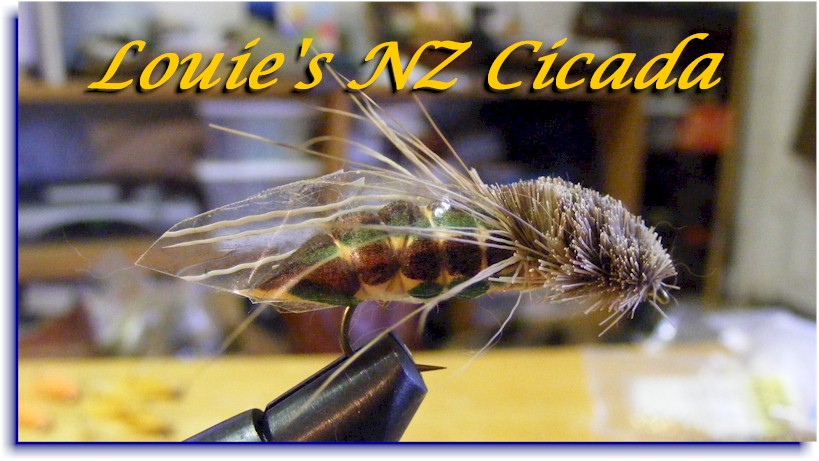
Tying Steps
 |
 |
| Wrap hook with thread glue, wrap Glo bug yarn to mid-point | Carve bodies from foam with scissors to boat shape |
 |
 |
| Soak yarn with super glue, press body down and X-tie down | Using indelible markers, color body as shown |
 |
 |
| Next add the clear tape wing. Take a piece of tape 4 inches long, add 3 or 4 single deer hairs to the sticky side of the tape at the bottom, press that side along the back side of the body, then fold the tape over to line up with the front side and squeeze together. You can also make this fly with out a clear wing by going to the next step and adding long deer hair along each side of the body. |
Trim wing to shape as shown |
 |
 |
| Tie down the wing in front | Spin deer hair to form head and front legs |
 |
 |
| The completed fly with clear tape wing. Cicadas have a square-shaped head. It is important to trim and shape the head to have the shape of a Cicada |
Completed fly without clear tape wing |
 |
 |
| The green cicada version | Top view of all three patterns |
Presentation
The tape wings on my cicada may come apart after a few fish have eaten it. This causes the fly to spin when cast, twisting up the tippet. But when it hits the water the tippet unwinds and causes the fly to flip over and over – just like a struggling cicada. Whack! The best presentation is to plop the bug down loudly, then dead drift it. Don’t set the hook too quickly when a fish rises. Let it take it down and then tighten up. It’s a lot like dry fly fishing for steelhead. Set too soon and you’ll miss it.
Have fun tying my NZ Cicada and I hope it brings you as much luck as it has for me and my clients.
Louie the Fish
